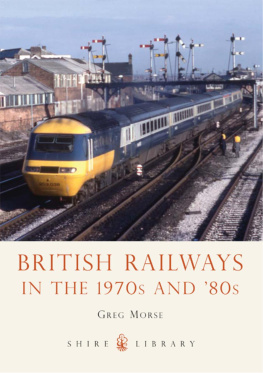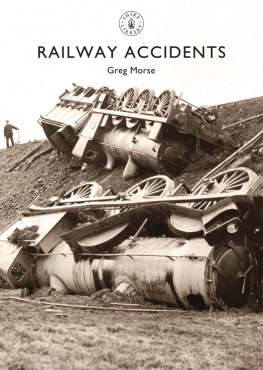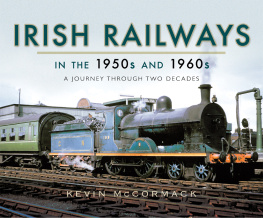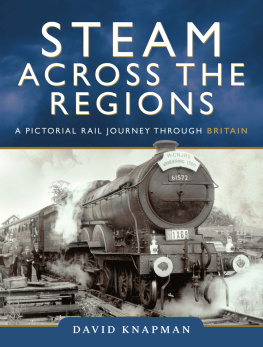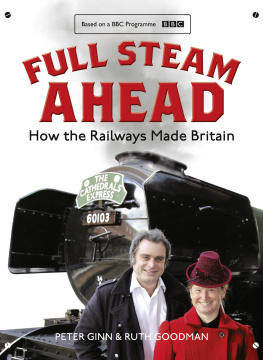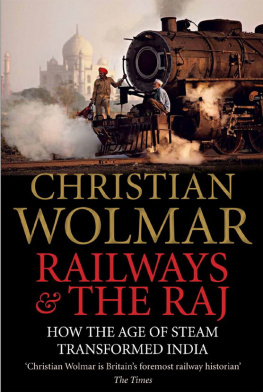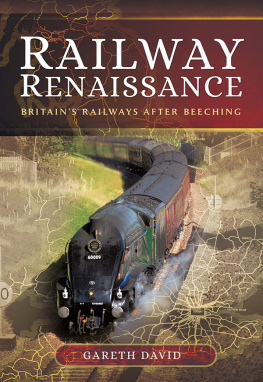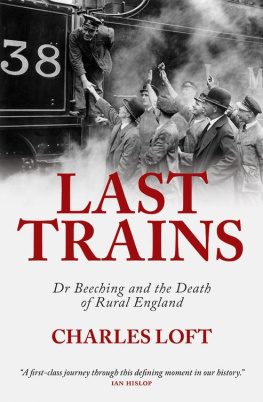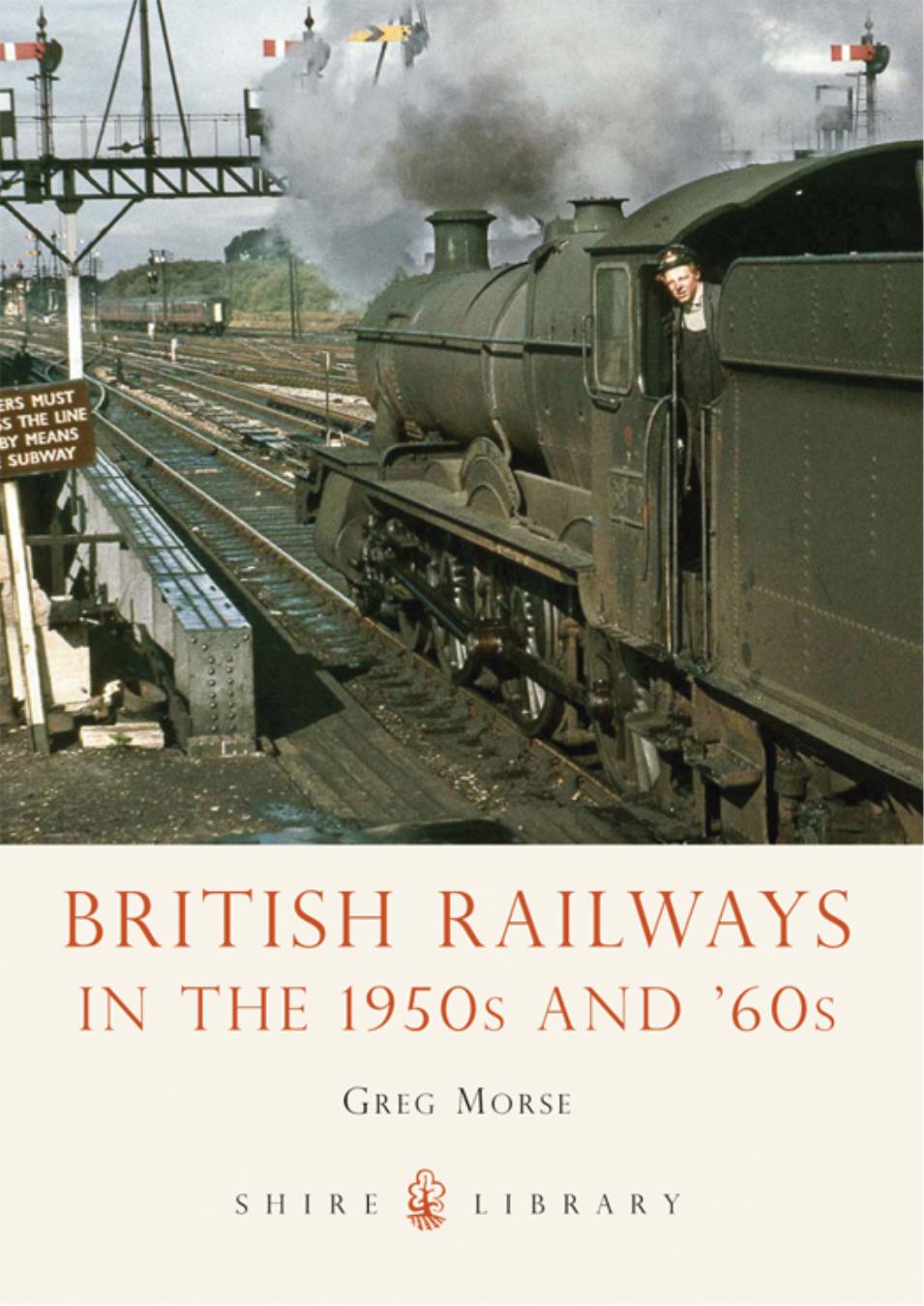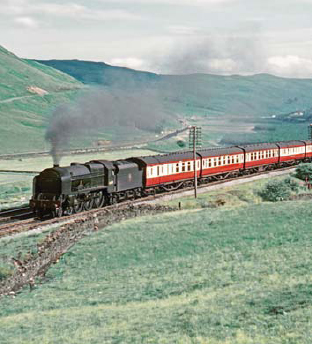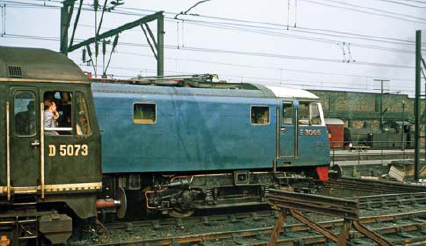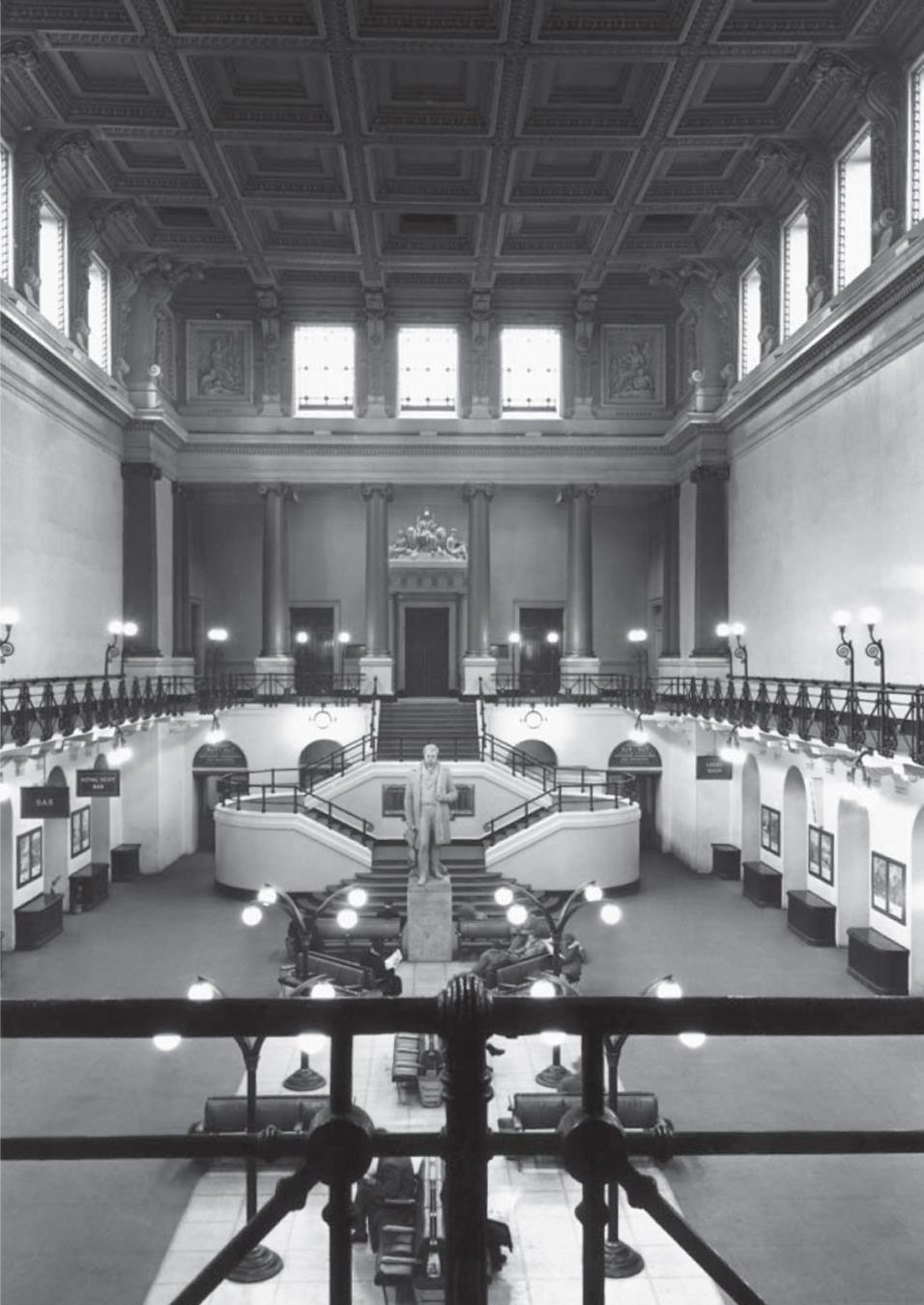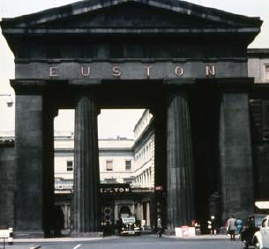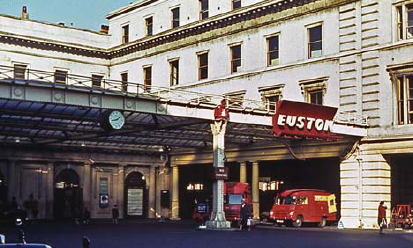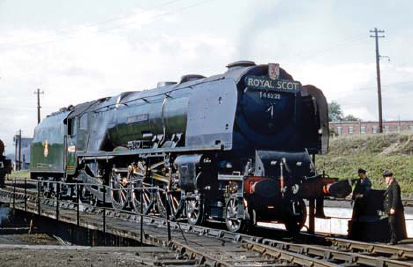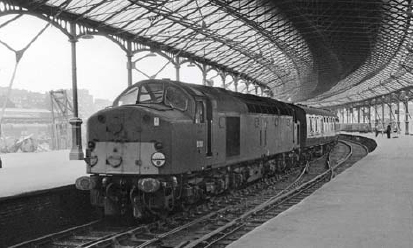BRITISH RAILWAYS
IN THE 1950s AND 60s
Greg Morse
SHIRE PUBLICATIONS
Early BR splendour as ex-LMS unrebuilt Scot no. 46148 The Manchester Regiment takes a CarlisleGlasgow service past Harthope in July 1953.
Changing of the guard. AL1 electric E3005 prepares to leave Crewe in June 1964 as SulzerType 2 D5073 stands by. In the background, ex-LMS 3F 0-6-0T no. 47391 is on pilot duties.
CONTENTS
The Great Hall, Euston, with George Stephensons statue surveying the scene. Opened in 1849, it had become a dark, uninviting place by 1950. This picture was taken after BRs refurbishment of 1953. Sadly, all would be demolished within a decade.
INTRODUCTION: TRANSITION THROUGH TIME
1950
A CRISP DECEMBER MORNING, and a black cab pulls up in Drummond Street beneath a glowing winter sun. A gloved hand pays the fare, a gnarled hand opens the door, and the silk-stockinged leg of a woman appears as she steps on to the London pavement. Her dark blue coat caressed by the breeze, she walks beneath the Doric Arch, across the courtyard and into the cathedrallike Great Hall. Goodness, there are so many people! All milling around and getting in my way. But where is Hamish? I distinctly told him No wait, there he is over by the statue.
Janey waves gaily; Hamish waves back from his spot next to George Stephenson, happy that hes managed to buy the tickets already. There should be plenty of room on the train they might even get a compartment to themselves if theyre lucky. A porter, the brass buttons on his serge uniform shining, loads their luggage on to a trolley presents for the aunts, presents for the nephews, and enough gowns and suits for a week of wining and dining in Scotlands second city. Now, wheres our platform? Gosh, Euston can be such a gloomy, smoky place
Just ahead, young Johnny unwraps his third toffee. He likes the departure side of the station the best. Theres nothing like the sight of a steam train starting its journey the plume of white smoke, the quickening bark of the exhaust, the slip of a wheel, the hiss of the sander nothing like it on earth! Johnny worships the engine drivers and hopes to follow in his fathers footsteps to become one himself. One day.
The porters and inspectors all know him holidays and weekends, hell be there, notebook and pencil in hand, Ian Allan ABC in his pocket. Sometimes they let him keep his penny platform ticket a trophy of his spoils, which he carefully places in an old tobacco tin at home. Occasionally, a driver will let him climb on to the footplate. Today, Old Charlie a friend of his father at Camden Shed gives him the tip. He doesnt need asking twice and soon finds himself basking in the welcome heat of no. 46256 Sir William A. Stanier, F.R.S. a huge Pacific named after its designer, though built under his successor George Ivatt and wearing the new black livery of British Railways. Johnny knows all this and more (much more!) thanks to his father, and the occasional copy of The Railway Magazine that his granddad gives him. He stands back as the fireman fills up the back corners of the grate, his metal shovel clanging as coal falls into flame. The driver checks his gauges and makes one or two deft adjustments before looking at his watch: 9.55 just five minutes to go. Johnny knows its time for him to leave the Royal Scot should never be late.
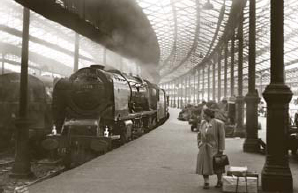
Ex-LMS Duchess Pacific no. 46235 City of Birmingham arrives at Euston with the Royal Scot as parcels, packages and passenger await. This locomotive is preserved and resides at Thinktank, Birminghams science museum.
Until 1962, the start of a journey from Euston looked like this; Philip Hardwicks magnificent Doric Arch was erected for the London & Birmingham Railway in 1837 as a triumphant gateway to the Midlands.
Back on the platform, he runs to the front of the train to savour the sight of the locomotive. How splendid it looks against the sky! Sir William is a cop too an engine hes never seen before, which means a lovely, long name to underline in the book tonight. All the same, he cant help wondering which member of the class will take over at Carlisle ...
A group of nuns, a young family, an old couple Ah, here we are! Janey opens the door of the empty compartment and sets about adjusting it to her requirements, dropping the blind on one side, turning up the heat, and opening the toplight a touch. These old carriages are past their best now, but theyre warm, and their upholstery is soft and inviting. Outside, Hamish tips the porter and climbs aboard. Finding his wife, he kisses her and heads for the restaurant car, smiling as he sees a boy on the platform at his age, hed wanted to be an engine driver too. Perhaps he still does just a little.
Walking through the Arch would bring you to this courtyard, whence access to the station proper could be gained.
The Duchesses had charge of the Royal Scot throughout the 1950s and into the early 60s. In this 1956 view, no. 46222 Queen Mary is about to be turned at Kingmoor shed, locomotive changes usually being made at nearby Carlisle Citadel station.
Ten oclock comes: a lever is pulled and a green light shines; a guards whistle blows and a green flag waves; the regulator opens and the engine breathes low. Passengers feel a jolt as the journey begins; Johnnys heart jumps at this stirring sight again.
He watches the train fight its way up Camden Bank til the tail lamp disappears. Its a timeless scene which will never change. Or so he thinks.
Diesels would soon start to make their presence felt at Euston. On the blocks in July 1963 is D301, an English Electric Type 4 the most powerful of the Pilot Scheme classes. In the background, the old departure platforms have been bulldozed in readiness for rebuilding.
1969
Euston had expanded haphazardly over the years and was blighted by a track layout that made it difficult to operate. The LMS had wanted to remodel the site in the 1930s, but the Second World War put paid to its plans. By the mid-1950s, BR knew it had to modernise: its assets had been seriously overworked and under-maintained during the war, and it needed to attract people away from planes and private cars.


